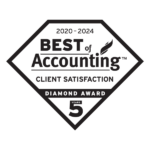As 2024 comes to a close, it’s important that tax-exempt organizations provide acknowledgment letters to donors for charitable contributions that meet IRS requirements.
Such letters are a vital part of donor relations, not only because they’re required for donors to substantiate their charitable contribution deduction on personal income tax returns, but because prompt acknowledgment helps reassure those donors that their contribution was received and appreciated. The IRS provides specific recordkeeping and substantiation rules that are critical for organizations to understand when providing acknowledgment letters.
When a tax-exempt organization receives a cash donation of $250 or more, the acknowledgment must include the name of the tax-exempt organization, the amount received, the date of receipt and a statement that no goods or services were provided in return for the contribution.
When an organization receives a cash donation of $75 or more and goods or services are provided in return, the acknowledgment letter must include the value of goods and services provided in return, as well as the name of the organization, the amount received and the date of receipt.
When a nonprofit receives a noncash donation of $250 or more, the acknowledgment letter to the donor must include the name of the organization, date of receipt and description of the property received, but not the value of the noncash item(s), plus a statement that there were no goods or services received in return (or the value of goods and services provided). It’s the responsibility of the donor to determine the value of noncash donations given to qualified charities.
The acknowledgment should be contemporaneous and written and must be received by the donor on or before the earlier of:
- the date on which the donor files his or her individual federal income tax return for the year of the contribution or
- the due date (including extensions) of such return.
Charities typically send written acknowledgments to donors no later than January 31 of the following year. If there are multiple gifts from a single donor in one year, the organization can aggregate them into one letter.
It’s also important to note that some states have requirements that must also be included in the letter or the written request for the contribution.
About Schneider Downs Not-for-Profit Services
Our Not-for-Profit industry group is committed to providing exceptional service and expertise to a community of clients who serve our regions tirelessly each day. We provide valuable insight to not-for-profit organizations of all sizes and their boards through our assurance, tax, advisory and technology consulting services and not-for-profit fund accounting software.
To learn more, visit our Not-for-Profit Industry Group page.





